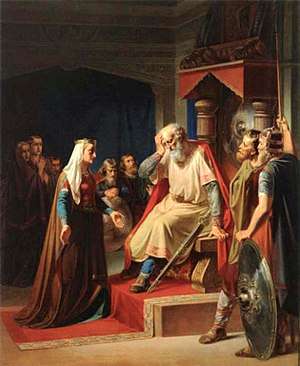958
Year 958 (CMLVIII) was a common year starting on Friday (link will display the full calendar) of the Julian calendar.
| Millennium: | 1st millennium |
|---|---|
| Centuries: | |
| Decades: | |
| Years: |
|
| 958 by topic |
|---|
| Leaders |
| Categories |
|
| Gregorian calendar | 958 CMLVIII |
| Ab urbe condita | 1711 |
| Armenian calendar | 407 ԹՎ ՆԷ |
| Assyrian calendar | 5708 |
| Balinese saka calendar | 879–880 |
| Bengali calendar | 365 |
| Berber calendar | 1908 |
| Buddhist calendar | 1502 |
| Burmese calendar | 320 |
| Byzantine calendar | 6466–6467 |
| Chinese calendar | 丁巳年 (Fire Snake) 3654 or 3594 — to — 戊午年 (Earth Horse) 3655 or 3595 |
| Coptic calendar | 674–675 |
| Discordian calendar | 2124 |
| Ethiopian calendar | 950–951 |
| Hebrew calendar | 4718–4719 |
| Hindu calendars | |
| - Vikram Samvat | 1014–1015 |
| - Shaka Samvat | 879–880 |
| - Kali Yuga | 4058–4059 |
| Holocene calendar | 10958 |
| Iranian calendar | 336–337 |
| Islamic calendar | 346–347 |
| Japanese calendar | Tentoku 2 (天徳2年) |
| Javanese calendar | 858–859 |
| Julian calendar | 958 CMLVIII |
| Korean calendar | 3291 |
| Minguo calendar | 954 before ROC 民前954年 |
| Nanakshahi calendar | −510 |
| Seleucid era | 1269/1270 AG |
| Thai solar calendar | 1500–1501 |
| Tibetan calendar | 阴火蛇年 (female Fire-Snake) 1084 or 703 or −69 — to — 阳土马年 (male Earth-Horse) 1085 or 704 or −68 |

King Gorm the Old (c. 936–c. 958)
Events
By place
Byzantine Empire
- October / November – Battle of Raban: The Byzantines under John Tzimiskes defeat the Hamdanid forces in northern Syria. Emir Sayf al-Dawla is forced to retreat – many of his court companions and ghilman fall in pursuit, while over 1,700 of his Turk cavalry are captured and paraded in the streets of Constantinople.[1]
Europe
- King Berengar II invades the March of Verona, which is under control of the dukes of Bavaria, and lay siege to Count Adalbert Atto at Canossa Castle (northern Italy). Berengar sends a Lombard expeditionary force under his son Guy of Ivrea against Theobald II, duke of Spoleto. He captures Spoleto and Camerino.
Africa
Asia
- King Ksemagupta dies of a fever after a hunting party. He is succeeded by his youngest son Abhimanyu II. Queen Didda, the widow of Ksemagupta, becomes regent and the de facto ruler of Kashmir (modern India).
- Emperor Chai Rong of the Later Zhou invades the Northern Han and the Khitan Empire in the Sixteen Prefectures (northern China), but is defeated.
Births
- Basil II (Bulgar Slayer), Byzantine emperor (d. 1025)
- Otto-William, count of Burgundy (approximate date)
- Rinchen Zangpo, Tibetan Buddhist monk (d. 1055)
- Samuel, tsar of the Bulgarian Empire (approximate date)
- Vladimir I (the Great), Grand Prince of Kiev (d. 1015)
- Yang Yanzhao, general of the Song Dynasty (d. 1014)
- Yaropolk I, Grand Prince of Kiev (approximate date)
Deaths
- June 2 – Oda (the Good), archbishop of Canterbury
- September 17 – Li Jingsui, Chinese prince (b. 920)
- September 18 – Liu Sheng, Chinese emperor (b. 920)
- October 15 – Toda, queen of Pamplona (b. 876)
- date unknown
- Ammar ibn Ali al-Kalbi, Fatimid military commander
- Faifne an Filí, Irish poet and ollamh ("professor")
- Finshneachta Ua Cuill, Irish poet
- Fujiwara no Kiyotada, Japanese poet
- Lashkarwarz, Daylamite military commander
- Mastalus II, duke and patrician of Amalfi (Italy)
- Ōnakatomi no Yorimoto, Japanese waka poet
- Qingliang Wenyi, Chinese Buddhist monk
- Sumbat I, king of Iberia (Georgia)
- probable
gollark: It has exciting NI compatibility features.
gollark: No you don't.
gollark: Technically, training someone else to do a task is "training a neural network"!
gollark: By which I mean either a software neural network or just an underpaid human volunteer.
gollark: Wait, what if I train a neural network to do it?
References
- Shepard, Jonathan (2010). The Oxford Encyclopedia of Medieval Warfare and Military Technology, Volume 3, pp.151–152. Oxford: Oxford University Press. ISBN 978-0-19-533403-6.
- Gilbert Meynier (2010) L'Algérie cœur du Maghreb classique. De l'ouverture islamo-arabe au repli (658-1518). Paris: La Découverte; p. 42.
- La Chronique de Nantes pages 109-110 indique qu’il aurait été ébouillanté dans son bain par sa nourrice sur ordre de Foulque II d'Anjou
- "The Royal Lineage". The Danish Monarchy. July 6, 2015. Archived from the original on July 6, 2015. Retrieved May 27, 2019.
This article is issued from Wikipedia. The text is licensed under Creative Commons - Attribution - Sharealike. Additional terms may apply for the media files.